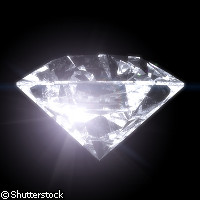Mar 1 2010
German and US researchers have produced a super-sharp, strong, and resilient carbon tip that has earned top place as the industry's current benchmark. Funded by the EU, the diamond-like tip is 3,000 times more wear-resistant at the nanoscale than a silicon oxide tip, making it ideal for use in atomic imaging, probe-based data storage, and other emerging applications. Findings from the study are published in the journal Nature Nanotechnology.

该研究是Protem(“基于探针的Terabit Memory”)的一部分,该项目在第六框架计划(FP6)的“信息社会技术”(IST)主题领域(FP6)获得了530万欧元。当前研究的合作者包括位于瑞士的IBM Research-Zurich,以及位于美国的宾夕法尼亚大学和威斯康星大学。
作者在他们的论文中写道,对纳米级的摩擦和磨损的了解[适用于纳米技术的长度比例]对于许多涉及纳米级组件滑行的纳米级组件的应用都很重要。这些新兴应用包括纳米光刻,纳米测量学和纳米制造。
他们解释说,钻石状的碳通常被用作某些类型的应用中的表面涂层,这些应用需要低摩擦和磨损,因为它在宏观上耐磨。到目前为止,问题一直是纳米级磨损的材料的弹性,因为具有纳米级精度的制造钻石样碳结构很复杂。
宏观和纳米级之间的另一个关键区别是,在纳米尺度上控制材料强度和磨损的缺陷,裂纹和其他条件在纳米级不那么重要。
The new nano-sized tip produced by the researchers wears away at a significantly lower rate than that of a silicon oxide tip (the current state of the art). At a rate of one atom per micrometer of sliding on a substrate of silicon dioxide, the material has now set a new standard.
他们总结说:“ [钻石样碳材料]在潮湿的条件下具有低摩擦力,我们发现在纳米级,在环境条件下,这比硅耐磨的三个数量级更具耐磨性。”
The tip comprises carbon, hydrogen, silicon and oxygen, all combined together on the end of a silicon microcantilever (used in atomic force microscopy). Instead of simply coating the tip with wear-resistant materials, the scientists developed the material from scratch. They used a molding technique to produce the tips on the silicon microcantilevers, and a bulk processing technique that would allow for mass commercial manufacturing in the future.
资源:CORDIS